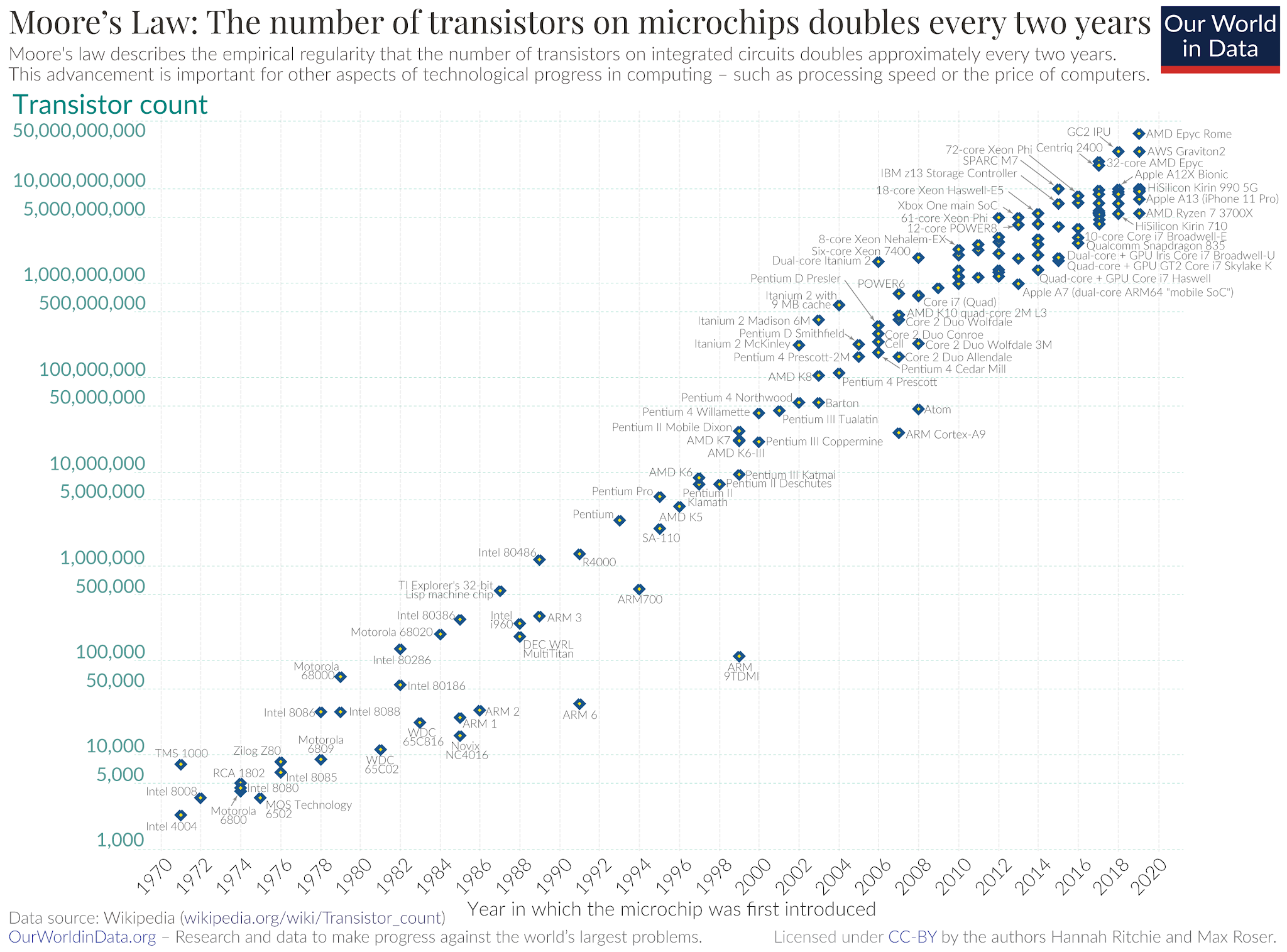Can't break this law
Forecasting and predicting in IT/Cyber can be difficult, but there is an aspect of this world that people consistently predict for with the goals being met. For those of you that care not to track silicon chip development and projections, Moore’s Law may be unfamiliar to you. Hoping in our time machine back to April 19th, 1965, in a section aptly called “The experts look ahead, Dr. Gordon Moore made a prediction that every two years the number of semiconductors that a measurable space can contain would double(Moore, 1965). It has been 56 years, and the law holds to this day. I personally made a prediction when pursuing my BS that Moore’s law would die due to eventually reaching a stage where the width of a wavelength of light used to cut the wafer would be larger than the cut needed.
To me, what is most impressive is that not only did his prediction prove true in the short term, but has held up an insane amount of time when considering we are talking about IT development. IT changes fast. In five years what we have new today, and the ideas with them, will be considered old. Moore’s Law is the law.
Today, technology is developed with the idea that in a certain amount of time, the physical requirements of the silicon will meet the development timeline, and can be planned accordingly. Simplified, it will take me four years to get something to market, with that knowledge I can predict the power and size of the silicon available to me. To summarize, Moore's law is important in business AND innovation context. Innovation in the ability to continue to reduce the size of the semiconductors, and business in that companies use Moore's Law to predict where technology will be so they can best plan, aka forecast, the way forward.
Further development will rely on a competitive development in the marketplace. Monopolies lead to development stagnation, and mergers can lead to less competition. Development of the fabrication plants and machines is the key to creating silicon, and a disruption like that posed by COVID-19 can throw things out of course. Finally, I still believe that one day the physical limits of technology will be reached when it will be impossible to make something smaller due to being unable to cut that small.
Attached is a great graph provided by Wikipedia, but with the originating source credited in the image.
References
Moore, G. (1965, Apr 16). Cramming more components onto intergrated circuits. Electronics Magazine, 38(8). Retrieved from http://www.monolithic3d.com/uploads/6/0/5/5/6055488/gordon_moore_1965_article.pdf
To me, what is most impressive is that not only did his prediction prove true in the short term, but has held up an insane amount of time when considering we are talking about IT development. IT changes fast. In five years what we have new today, and the ideas with them, will be considered old. Moore’s Law is the law.
Today, technology is developed with the idea that in a certain amount of time, the physical requirements of the silicon will meet the development timeline, and can be planned accordingly. Simplified, it will take me four years to get something to market, with that knowledge I can predict the power and size of the silicon available to me. To summarize, Moore's law is important in business AND innovation context. Innovation in the ability to continue to reduce the size of the semiconductors, and business in that companies use Moore's Law to predict where technology will be so they can best plan, aka forecast, the way forward.
Further development will rely on a competitive development in the marketplace. Monopolies lead to development stagnation, and mergers can lead to less competition. Development of the fabrication plants and machines is the key to creating silicon, and a disruption like that posed by COVID-19 can throw things out of course. Finally, I still believe that one day the physical limits of technology will be reached when it will be impossible to make something smaller due to being unable to cut that small.
Attached is a great graph provided by Wikipedia, but with the originating source credited in the image.
References
Moore, G. (1965, Apr 16). Cramming more components onto intergrated circuits. Electronics Magazine, 38(8). Retrieved from http://www.monolithic3d.com/uploads/6/0/5/5/6055488/gordon_moore_1965_article.pdf

Comments
Post a Comment